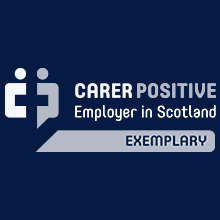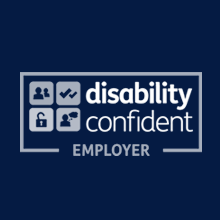All referrals will be triaged by the Colorectal Team. Patients with a palpable abdominal or rectal mass will be triaged directly to an outpatient appointment. All other patients will be asked to submit 2 qFIT tests.
qFIT tests will be generated from Secondary Care and the results will be interpreted, and appropriate clinical action taken, by Secondary Care. Please remind patients that when contacted by Secondary Care they should complete and return this as per the instructions as soon as possible.
Patients will then be triaged according to their symptoms, qFIT results and patient frailty and co-morbidity to determine the next step which may be colonoscopy, CT colonography, minimal preparation CT or outpatient consultation. Patients with 2 negative qFITs and low risk symptoms are unlikely to undergo any further tests and will be discharged, with advice where appropriate.
The outcome of a set of tests will be communicated directly to patients by the triaging consultants, copied to the GP. Patients who have not completed the full set of investigations will be booked into a virtual clinic for the triaging consultant to assess the residual risk.
NB Please note that although the bowel screening programme and the Colorectal service (for symptomatic patients) both use quantitative FIT (faecal immunochemical test), the test threshold for further investigation is different for the two patient populations. In the asymptomatic population, the threshold used by screening is >80 mHb/g but in symptomatic patients, the threshold for investigation is >10 mHb/g. Hence, a person may have had a ‘negative’ FIT from screening but have a test value that is >10mg/g. Therefore, a person presenting with colorectal symptoms should not be advised to request a bowel screening kit as there is a risk that abnormal results and therefore significant bowel pathology could be missed. If someone presents with concerning colorectal symptoms, please refer as advised in the pathway below.
B.C & F.D 27-11-25
Who to refer:
Any patient with high risk features as detailed below:
| Bleeding | – Repeated rectal bleeding without an obvious anal cause – Any blood mixed with the stool |
| Bowel habit | – Persistent (more than four weeks) change in bowel habit especially to looser stools – not simple constipation) |
| Mass | – Unexplained abdominal mass – Palpable ano-rectal mass |
| Ulceration | – Unexplained anal ulceration |
| Pain | – Persistent abdominal pain (four weeks or more) and weight loss (5% or more of body weight or strong clinical suspicion) |
| Iron deficiency anaemia | – Unexplained iron deficiency anaemia See detailed advice regarding this at: https://apps.nhslothian.scot/refhelp/Gastrointestinal/IronDeficiencyAnaemia and refer via Sci Gateway under Gastroenterology if this is the only symptom. RIE >> Gastroenterology – Medical >> LI Iron Deficiency Anaemia SJH >> Gastroenterology – Medical >> LI Iron Deficiency Anaemia WGH >> Gastroenterology – Medical >> LI Iron Deficiency Anaemia |
All patients should have the following before referral:
- Abdominal examination
- PR examination (Please perform a PR examination for all patients and document the results of this in the referral. An abnormal PR examination changes how a patient is investigated/managed. If there is no information regarding a PR examination, the referrer will be contacted to obtain this information before the referral can be triaged.)
- FBC (plus ferritin/iron studies if anaemic), U&Es, LFTs – all within last 6 weeks
If symptoms suggestive of malignancy i.e. weight loss or other non-specific symptoms (without iron deficiency anaemia) in the absence of GI symptoms consider direct referral for CT via GP access pathway: https://apps.nhslothian.scot/refhelp/guidelines/GPAccesstoCTforSuspectedCancer(NoClinicallyObviousPrimary).aspx
Consider the possibility of ovarian cancer in any woman over 50 years who has experienced new symptoms within the last 12 months that suggest irritable bowel syndrome.
How to refer:
Via Sci Gateway to Colorectal Surgeons at the WGH or SJH via
WGH >> General Surgery – Colorectal (Urgent)>> LI Urgent Colorectal Cancer
SJH >> General Surgery – Colorectal>> LI Urgent Colorectal Cancer
Please indicate if a patient is frail +/- has co-morbidities because this may influence if, and what, further investigations are appropriate. Please also establish that the patient wishes to be investigated and is willing to attend the hospital for appointments.
Additional tests may also be appropriate for some patients:
- If constipation: TFTs, Calcium
- If diarrhoea: Faecal calprotectin (those under 40 years old), HIV serology and stool culture
- Coeliac screen (anti tTG antibody)
- CA125 and pelvic US scan
- If unexplained weight loss: HIV serology
Scottish Referral Guidelines for Suspected Cancer 2025
Coming for a minimal preparation CT colon: https://vimeo.com/921055702/4c0fc7e70a?share=copy
Coming for a CT colonogram: https://vimeo.com/921054998/2d95ec4818?share=copy
Preparing for your colonoscopy with Plenvu: https://vimeo.com/896489818/23ff5e9d23













